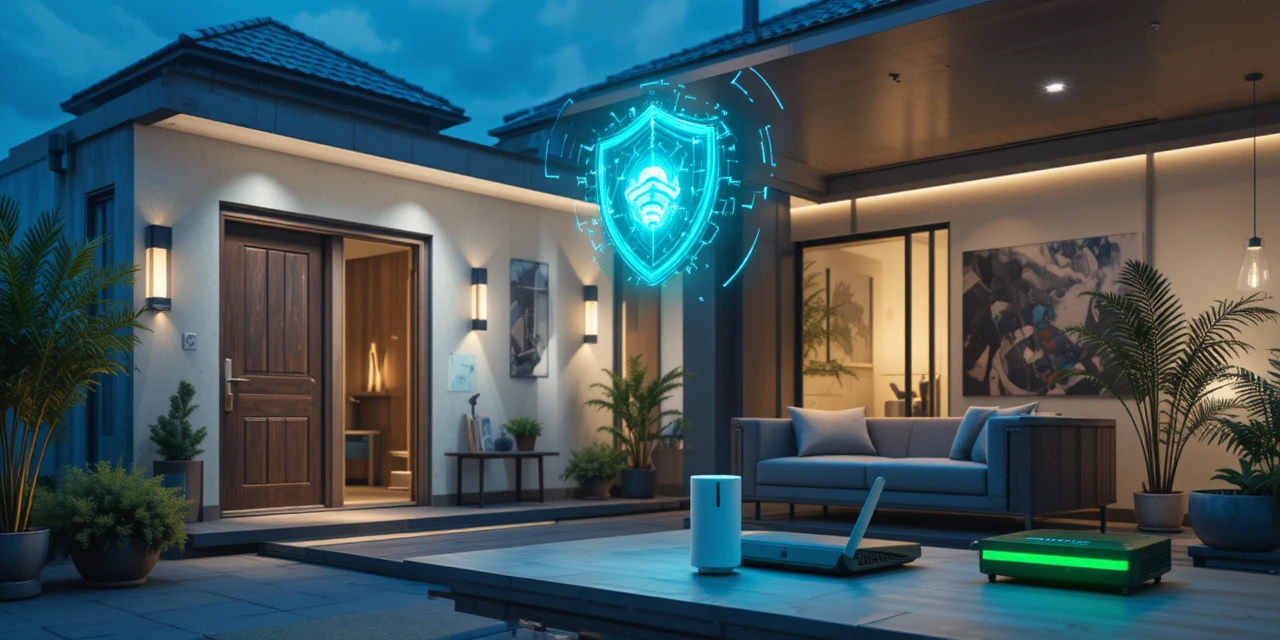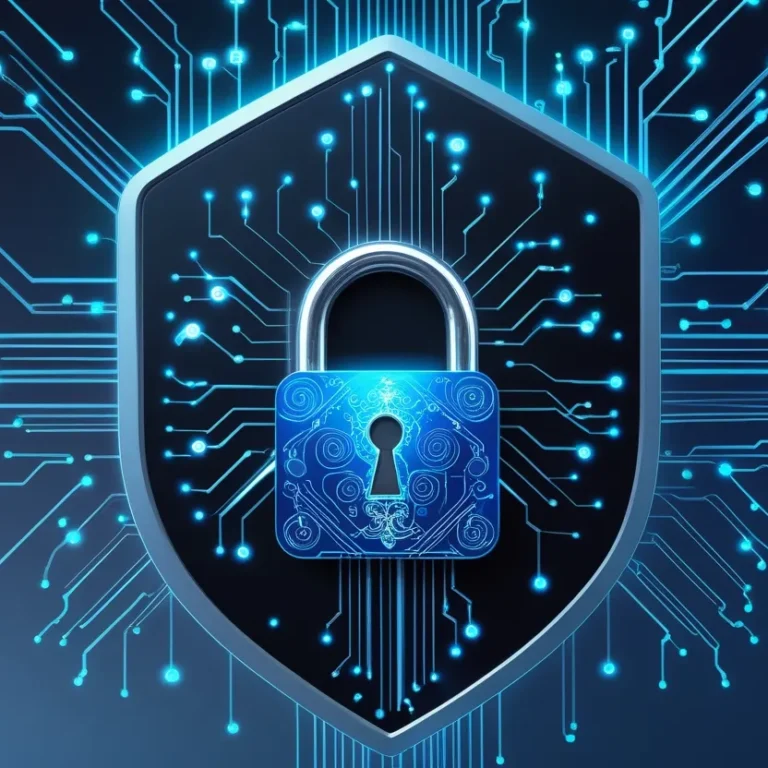How to Secure Your Smart Home Devices Against Common Hacks
Table of Contents
Introduction: Why Smart Home Security Is Important
By 2025, smart stuff will pervade every corner of American households. From smart fridges and Nest thermostats to Ring doorbells, nearly everything demands to remain internet-connected. But all that connectivity has associated threats. Most devices still have poor or old security, which makes them vulnerable to hackers.
We will discuss in this guide simple and efficient methods to secure your smart home gadgets and your whole house network against cyberattacks.
Common Smart Home Attacks You Should Know
Smart homes can be hacked in different ways. Here are some of the most common attacks and what they mean:
🛡️Outdoor Devices Can Be a Hacker’s First Target
Smart home hacks don’t always happen inside your house they can start right outside. In the U.S., more than 21 million homes have security systems, but these systems are not 100% safe.
Hackers have broken into some popular security cameras and even talked to families through them saying rude things, scaring kids, and in some cases asking for money to stop. Others have had their heat turned up to 90°F or heard disturbing music play in their homes.
And it’s not just cameras. People use apps to control garage doors, sprinklers, and lawn tools. According to American cybersecurity experts, these outdoor devices are often the easiest targets.
Devices like smart doorbells, sprinklers, and garage openers are easy to find and attack from the street using a laptop or Wi-Fi transmitter. If hackers get into one of these devices, they can sometimes break into your entire home network.
To stay safe, always check how your devices store and share your data. If personal information is saved on a device that connects to your main Wi-Fi, one weak spot can give hackers access to everything.
💡 Quick Tip:
Change the default passwords of outdoor devices as soon as you set them up. Also, keep their firmware updated most hacks work because devices are running old, unpatched software.
🥛 Even Your Kitchen Can Be Hacked
These days, even your kitchen is going smart. You can turn on your blender, air fryer, or coffee machine using your phone or voice. It feels like living in the future but this future has some risks too.
Every smart appliance in your kitchen is connected to your Wi-Fi. If one device is weak, hackers could use it to sneak into your whole network.
A few years ago, researchers found a problem in a smart coffee maker that allowed hackers to get into the home Wi-Fi. That means something as simple as a coffee machine could give criminals a way into your home.
💡 Quick Tip: Always set a strong password for every new smart kitchen device and update it regularly.
Smart Home Gadget in Your Bedroom May Leak Your Data
For most, the bedroom isn’t just where they sleep but also where they rest and recharge. Several individuals are now using smart devices such as smart beds, sleep monitors, and mood lamps to enhance the comfort of their bedrooms.
Take a smart bed for example. It has sensors that track your sleep patterns, heart rate, and other health data, then sends the information to an app on your phone. This can be helpful for improving your sleep but it also means your personal data is being stored somewhere.
Most individuals do not consider what type of information these machines are gathering or in what way it is being utilized. They just assume that the company will protect it. However, in case the company is ever hacked or targeted with ransomware, your personal information might be revealed to cybercriminals.
💡 Quick Tip: Before purchasing or installing a smart device, read the business’s privacy statement and see if they encrypt information that they gather. Share only the data that you feel at ease with.
Simple Steps to Secure Your Smart Home
Smart devices have made life incredibly easy but also introduced fresh threats. The more devices you have linked to your Wi-Fi, the greater opportunities hackers have to access your network. If they do, they can gain access to other devices on your network, swipe confidential files, or even tap into your financial details.
Since we rely increasingly on smart technology, it is crucial to enhance the way we secure our devices. Follow these easy steps to secure your information yet still reap all the advantages of your smart home.
- Make Your Home Wi-Fi Safe
If your Wi-Fi is not safe, bad people (hackers) can use it and open your phone, computer, and smart devices. Do this to make it safe:
Change Wi-Fi name: Your Wi-Fi name shows when someone searches for networks. Don’t use your real name or home address. Use a name that no one can guess. If possible, hide the name.
Use secure lock (WPA2/WPA3): This is a Wi-Fi lock. Enable it in your router settings. WPA3 is the latest and most secure.
Disable UPnP: UPnP allows devices to connect to Wi-Fi fast, but hackers can do the same. Disable it so strangers won’t get in.
See who is connected to Wi-Fi: Look at what devices are connected. If you notice a device you don’t recognize, delete it.
- Hard-to-Guess Passwords for Safety
Make your passwords difficult to guess:
At least 12 letters
Use capital letters (A), lowercase letters (a), numbers (1,2,3) and symbols (@,#,!usb)
Don’t use the same password for everything create a new one per account
- Check Before You Buy
Before you get a smart device, consider:
Is this brand good and reputable?
Did they ever experience a data hack?
What data will this device gather and who can look at it?
Choose devices that:
Enable you to pause sharing your data
Enable you to view or remove your data at any time
- Insert Additional Security Step
Enable two-step login (also multi-factor authentication):
First, type in your password
Next, verify with a code sent to your phone or fingerprint/face scan
Even if an attacker knows your password, they still can’t access.”.
Additional Simple Tricks to Secure IoT Devices
- Upgrade Your Phone – Always upgrade your phone’s software. This secures your smart device applications against hackers.
- Secure Your Apps – Use passwords, fingerprint, or face unlock for applications controlling smart devices.
- Smart Speaker Safety – Place smart speakers in a way that strangers cannot shout commands from the outside.
- Limit Access – Keep trusted family members alone as the ones who can download and login to smart device apps.
- Fake Info Works – In app signups, use a false birthday or other info to cover your actual identity.
- Download Carefully – Install only official and trusted apps/skills on your smart TV or speakers.
- Change Guest Codes – In case visitors made use of your Wi-Fi or smart lock codes, reset them when they are leaving.
- Make Your Home Truly “Smart”
Wi-Fi, Bluetooth, or any wireless connection can be hacked if you’re not vigilant. The more you understand about these threats, the better equipped you’ll be to safeguard your home.
Remember this: the smartest home is the safest home. A small effort today can save you from major issues tomorrow.
Conclusion: Protect Your Smart House
These devices simplify and entertain your life from turning lights on from your phone to making coffee with your voice. They also provide hackers a back door if not adequately secured.
The good thing, though, is not that it is hard keeping your smart home safe.
Encrypt your Wi-Fi with a strong password.
Have a different password for each device.
Switch on multi-factor authentication (MFA).
Keep your apps and software up-to-date.
Use effective security software to avoid hackers.
Following these few easy steps, you may enjoy the benefits of a smart home without the risk of a cyber attack. A little care may transform your home into a safe, secure, and extremely smart place of living.
Stay connected with chillzone123 for more informational content. Thank you😊






